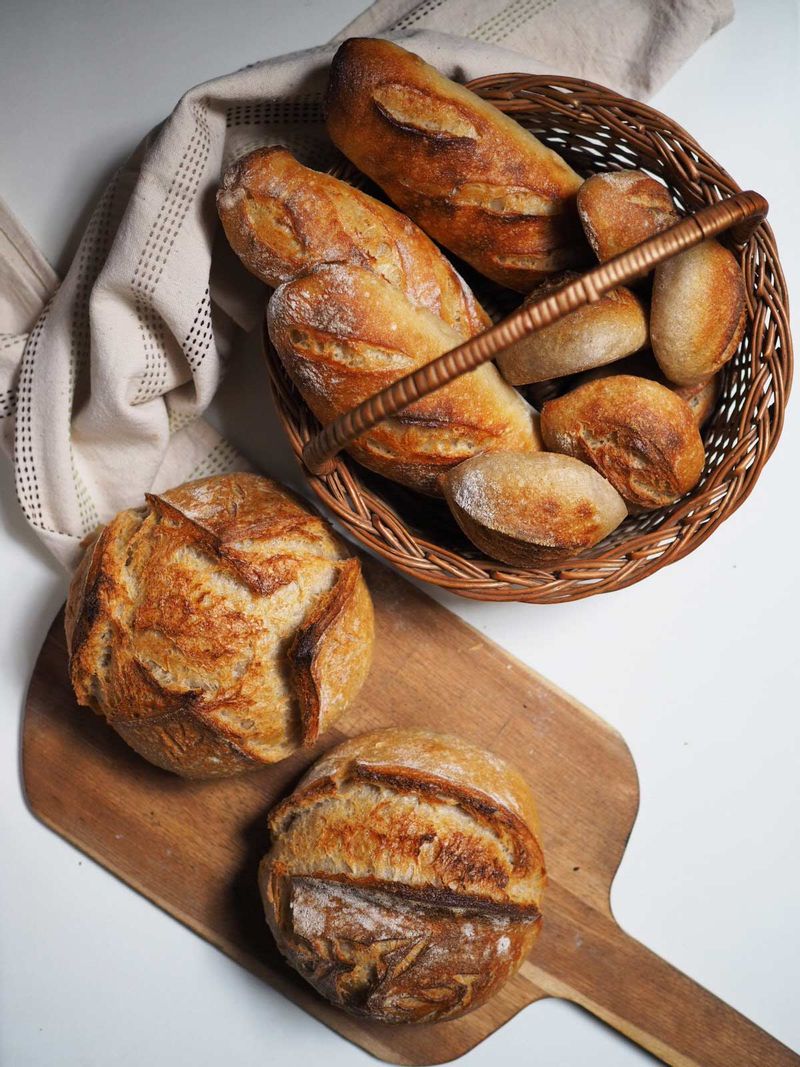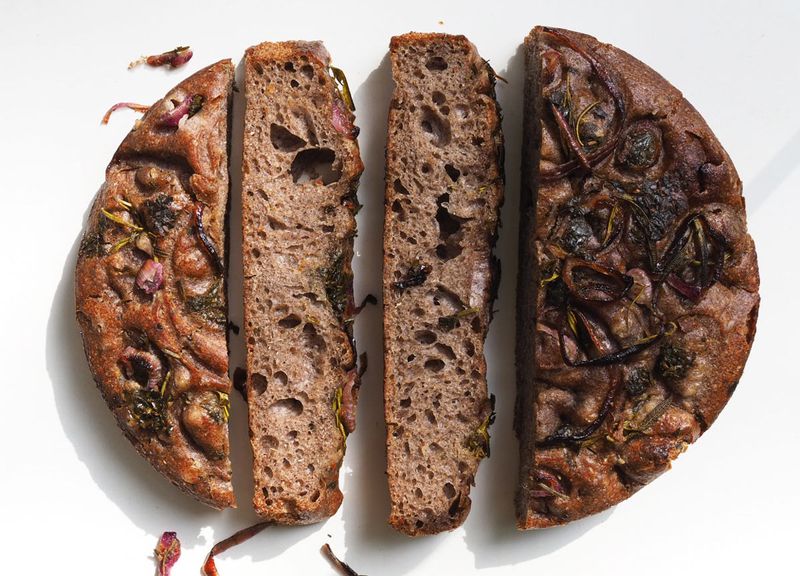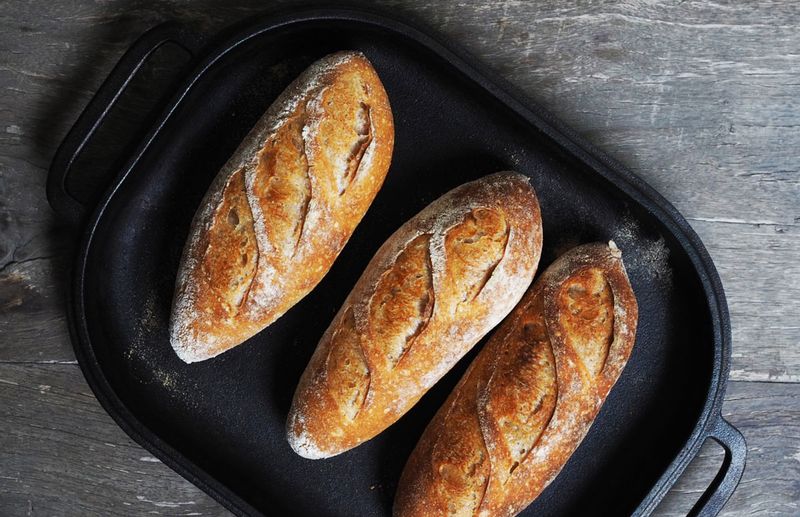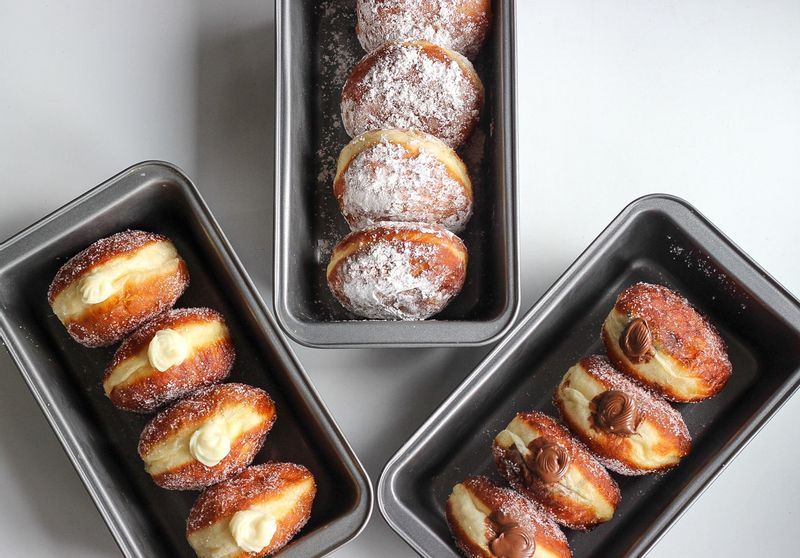Call it the baked goods champion of the pandemic lockdown.
Sourdough took over social media feeds at the beginning of the Covid-19 pandemic. The bread spoke to people’s inherent need to spend time creating something from scratch, nurturing and watching it grow. Sourdough seemed apt — it doesn’t require much equipment, it involves slow and mindful cooking, has a long shelf-life and it looks pretty for the ‘gram. Bonus: sourdough is healthy, versatile, it breaks down gluten making it more digestible and easier to absorb.
So, what is sourdough? Sourdough is an ancient method (believed to be the oldest) of leavening bread using wild yeast. The name refers to bread, and the starter used to make it. History has it that the use of sourdough in bread leavening developed in ancient Egypt and then spread to Europe, and North America with the arrival of European origin settlers. During the California Gold Rush of the 1800s, pioneer families travelling west could not preserve yeast, so they used sourdough starters. These starters had a sour tang, thus earning the name 'sourdough'. Speaking about the rising trend of sourdoughs and how to bake them at home, Anita Tikoo, an architect from Delhi who blogs at A Mad Tea Party says, “Anyone can make it. All you need is water, flour and salt.” Tikoo started off on the ‘lonely journey’ making sourdough in 2010, returned to it in 2016, and now conducts online sourdough classes.
“Sourdough baking is not just about getting the recipe right — it’s a beautiful concoction of the right weather conditions, appropriate room temperature, the dough temperature, the proofing time, the kind of flour you use,” says Nidhi Thakur, founder of 17|40 Bakery, Dharamsala.
It’s all about loving your starter

It’s the starter that makes the bread. “The foundation of good bread is a good starter. Other than baking bread it can replace commercial yeast in any recipe,” says Tikoo who recommends naming the starter (hers is called Frothy). Thakur concurs, adding, “Name your starter and give it a personality — that way you will feel responsible for it and try your best to keep it alive!”
A starter is a mixture of flour and liquid (water/milk) which has yeast and lactic acid bacteria in a symbiotic relationship. They generate by-products that cause the dough to rise and give it that characteristic tang. The lactobacilli are good for the yeast but inhospitable to other organisms so it acts as a preservative. “Making a starter from scratch only requires maida and water, feeds twice every day, and a lot of patience for 15 days,” says Thakur.
The trick to a good sourdough? It’s all about loving your starter. To keep the starter culture active and healthy, it should be 'fed' (freshened) regularly — with bottled/ filtered water and flour. The ideal feeding time is at its peak — when it has doubled or tripled in volume (bakers recommend using a rubber band around the container to mark the rise), it has bubbles at the top, and a dome shape.
"Every feed involves removing half the mix(called discard) and supplementing it with fresh flour and water. The most popular ratio is 1:2:2, one part starter culture to two parts flour and two parts water (by weight). This is a 100 per cent hydration starter (flour and water in the same proportion),” says Tikoo.

This adjustment of flour and water, and temperature is what creates the bread’s unique flavour profile. Some people believe that the hands that work on the dough and culture also impact the flavour.
"Temperature has a big role to play in fermentation. It is why bakers refer to it as an ingredient,” says Tikoo. “Too hot and the yeast go on hyper-drive, too cold and they get sluggish.” The ideal range for dough temperature is between24°C to 27°C. This temperature has to be consistent; a small change can impact fermentation and proofing time. If the starter cannot be fed every few hours, it can be kept in a cooler place to slow down the fermentation.
Baked to perfection

Once your starter is mature — this usually takes a couple of weeks — it’s time to get baking.
"To bake good bread, use the starter culture when it is at its peak," says Abhilasha Rajan, pastry chef and baker, and sourdough enthusiast. Last year, Rajan and her partner, mixologist Ananth Nayak started Barmbay in Mumbai to indulge in their love for all things fermented.
To make bread, Rajan begins with the autolyse process: mix water and flour and allow the dough to rest. "Add some of the starter culture to the dough, keep it for 30 minutes, and then add salt. This is when the dough begins its primary fermentation," she says. As the dough rises, she recommends gently stretching and folding, every half hour, for two hours. This gives the bread good structure. Shape the dough, let it rest (a process calling proving), then put it in a banneton (sourdough baking basket) or a baking container to prove again. Here, Rajan does a cold fermentation — she proves it in the basket in the refrigerator for 12-16 hours. After this second proof, it is ready to be scored and baked.
Adding flavours to sourdough

Sourdough bread is extremely versatile. “It’s easy to stick to one base recipe and add different variations to it, like the seeded boule or the occasional olive & rosemary sourdough that I love baking for myself,” says Thakur. At 17| 40 bakery, Thakur sells sourdough berliners (Bombolinis or stuffed doughnuts).
Bakers across the country are experimenting with flavours and ingredients in their sourdough bread, from chilli garlic to turmeric spice loaf. In Goa, Buland Shukla experiments with his flour too, using millet flour, raw cocoa and crystal malt blended flour, and his signature wholegrain blended flour.
Barmbay uses sourdough to make loaves (experimenting with olive and sundried tomatoes, sesame seeds); rolls with khapli wheat, sandwiches and crackers, pastries like cinnamon buns and chocolate babka, tea cakes and bombolinis. "You can flavour it with seeds, herbs, olives, sprouted grains like moong, ragi," says Rajan, adding that the ideal time to add the ‘flavouring’ is during the folding process.
Interestingly, the discard can also be used. Tikoo uses it to make sourdough parathas or pancakes. Barmbayuses their discard to make their bestselling sourdough banana bread, cakes, muffins, and crackers. Rajan recommends using the starter culture to make ginger beer.
Making sourdough may seem like a daunting task for a beginner. But, ultimately, all it needs is water, flour, salt, and patience. “Everyone can make sourdough, but you must love the process and enjoy immersing yourself in it,” says Tikoo. “Don’t do it because it is trending or if you want quick results.”
Online classes in India:SAPA Bakery — The best thing about Dina’s class is that she also sends you a package with an active starter. Sujit Sumitran — He’s one of the most famous sourdough teachers in the country. He takesclasses at his residence in Goa, and online. takes classes Online tutorials:Full proof baking— She has detailed instructions for everything – how to make a starter, basic bread recipe, sourdough fails & how to fix them. She also has a YouTube channel where she shares detailed procedures. |


